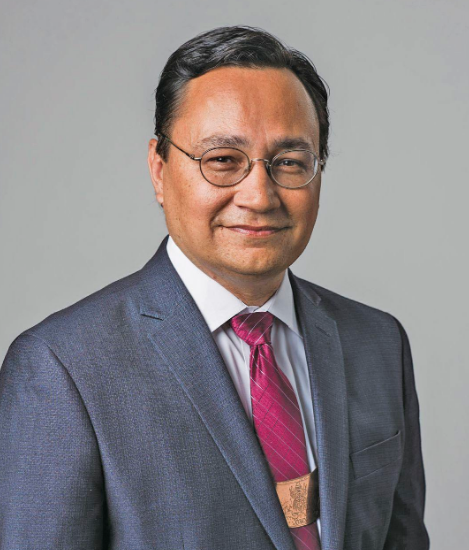
- Details
- By Chuck Hoskin Jr
Guest Opinion. A recent Tulsa World report revealed an unfortunate but all-too-real statistic: American Indians in Oklahoma die on average 17 years earlier than their non-Indigenous neighbors. While this finding is alarming, it comes as no surprise to the Cherokee Nation or to the nearly 40 other tribal nations in Oklahoma.
For generations, Native Americans have grappled with the lasting impacts of historical and generational traumas, leading to significant physical and mental health challenges. These struggles are compounded by the federal government's centuries-long failure to uphold its obligations and promises to provide adequate health care for Indigenous peoples across the country. This chronic underfunding and lack of resources have taken a devastating toll on Native American communities for far too many generations.
At the Cherokee Nation, we continue to fight tirelessly for additional health care resources for our people and for Indigenous people nationwide. We advocate at every level of government – from local city halls to the Oklahoma State Capitol, the halls of Congress and the White House – to ensure that our voices are heard and our needs are met. We ensure our voice is heard in health care decisions by participating in tribal advisory councils with entities like the Centers for Disease Control and Prevention and the Department of Health and Human Services. We see the disparities every day, which is why we work so hard to lead Indian Country into a new era of health for Indigenous people.
Even as we continue our advocacy efforts, we cannot afford to wait for the federal government to fulfill its responsibilities. That's why the Cherokee Nation, which operates the largest Native American health care system in the country, is taking unprecedented steps to address this crisis head-on. Based on carefully collected health care data, we are confident our historic investments in health care and wellness are improving health outcomes for our Cherokee citizens.
Construction continues on the Cherokee Nation’s new $400 million, 400,000-square-foot state-of-the-art hospital being built in the capital city of Tahlequah. The new hospital will include an ER, surgery, ICU, imaging, pharmacy and lab, neo-natal ICU, hospice, dietary and acute care, and many other services. When complete, it will also connect to our Cherokee Nation Outpatient Health Center, which is a 469,000-square-foot, four-story facility and the largest outpatient health center in the U.S. operated by a tribe. The Outpatient Health Center was opened in 2019 as the result of a historic joint venture with the Indian Health Service.
Cherokee Nation currently operates nine tribal health centers, one employee health center, and the existing W.W. Hastings Hospital. With outpatient health centers located across Northeast Oklahoma, Cherokee citizens even in the most rural areas of the reservation can find quick, efficient health care with a drive of less than 30 minutes. We’ve invested tens of millions of dollars upgrading these outpatient centers in recent years to expand services and ensure we are doing all we can to improve the lives of Cherokee citizens.
But we aren’t stopping with physical health care needs. Just last year, Deputy Chief Bryan Warner and I worked with the Council of the Cherokee Nation to begin work on the tribe’s first in-house drug treatment center. Our First Lady, January Hoskin, urged us even before we took office to bring innovative and compassionate drug addiction treatment directly to the Cherokee people.
We are realizing her vision with a forthcoming $18 million, 17,000-square-foot treatment center. It is just one part of the Cherokee Nation’s historic $100 million mental health investment through our Public Health and Wellness Fund Act legislation. Funding for this effort is the successful result of the Cherokee Nation Attorney General’s Office pursuing a lawsuit against irresponsible drugmakers and distributors in the opioid industry, which had flooded the reservation and preyed on our rural communities. This investment will help us bring some measure of relief, healing, and justice.

All these investments, and many, many more, represent our ongoing commitment to the health and well-being of our people. Thousands of Cherokee Nation Health Services and Public Health employees wake up every day with a commitment to serving the health care needs of our citizens, and their dedication cannot be overstated. We are strategically investing in growing that workforce through tribal scholarship opportunities and impactful partnerships. Among those entities are Oklahoma State University’s College of Osteopathic Medicine in Tahlequah, which is educating doctors in the only medical school on an Indian reservation, and the University of Oklahoma in Tulsa, Northeastern State University’s College of Optometry, Rogers State University in Claremore, and Mercy Health System in Fort Smith, Arkansas. These strategic partnerships resonate deeply with our core value of “Gadugi,” working together for the collective good.
The fact that Natives in Oklahoma have a 17-year shorter life expectancy than our non-Indigenous neighbors is more than a statistic – it represents countless lives cut short, loss of our culture and a lower quality of life. It will take all of us, working together, to reverse this trend and create a healthier future for all Native Americans. We know we cannot solve this crisis alone, so we will continue to advocate and encourage state and federal officials to work together in bipartisan efforts to address the urgent needs of Indigenous peoples.
Bridging the gaps in health outcomes and ensuring that Indigenous people have access to the care they deserve is long overdue.
Chuck Hoskin, Jr. is the principal chief of the Cherokee Nation.
More Stories Like This
Tribes Do Not Need a Greenlight to Build Renewable EnergyLaw Should Not Get in the Way When "Manifest-ing Destiny"
Celebrating 35 Years of Gaming Success
My Tribe’s ICE Contract Betrayed Our Values
Extending the Affordable Care Act Is a Moral Imperative for Indian Country
Help us defend tribal sovereignty.
At Native News Online, our mission is rooted in telling the stories that strengthen sovereignty and uplift Indigenous voices — not just at year’s end, but every single day.
Because of your generosity last year, we were able to keep our reporters on the ground in tribal communities, at national gatherings and in the halls of Congress — covering the issues that matter most to Indian Country: sovereignty, culture, education, health and economic opportunity.
That support sustained us through a tough year in 2025. Now, as we look to the year ahead, we need your help right now to ensure warrior journalism remains strong — reporting that defends tribal sovereignty, amplifies Native truth, and holds power accountable.
 The stakes couldn't be higher. Your support keeps Native voices heard, Native stories told and Native sovereignty defended.
The stakes couldn't be higher. Your support keeps Native voices heard, Native stories told and Native sovereignty defended.
Stand with Warrior Journalism today.
Levi Rickert (Potawatomi), Editor & Publisher

